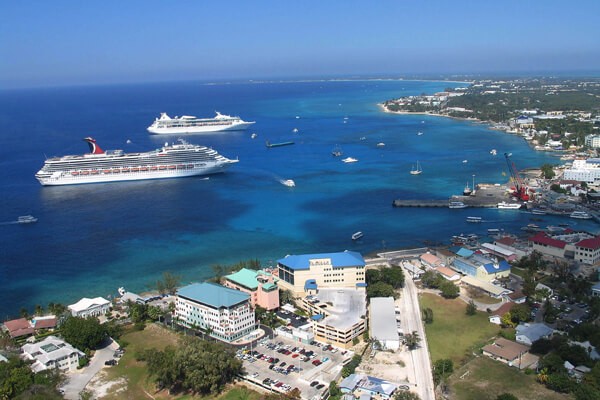
- Home Page
- Cayman Real Estate News & Views
Economic Growth Continues For 5th Consecutive Year!
December 22, 2016 CAYMAN ENTERPRISE CITY
The Cayman Islands hit a milestone of five consecutive years of growth, government economists announced Friday, with the gross domestic product reaching $2.8 billion in 2015.
The Economics and Statistics Office released a number of year-end reports late last week. The ESO reports the economy continued to grow in 2016, recording a 3 percent increase in the first half of 2016.
In a statement accompanying the new numbers, Finance Minister Marco Archer said the islands’ economy had grown faster than expected so far this year. “I am pleased to note that growth in the first half of 2016 improved on the 1.3 percent growth for the same period in 2015,” he said.
“It also exceeds the initial GDP forecast for the year of 2.1 percent, and is the highest growth rate since 2007,” the minister said.
While GDP has grown since the 2008 recession, the growth has not kept pace with population increases. GDP per capita, a measure of economic activity per person, dropped last year by almost half a percent to $48,167. The ESO notes, “Growth in GDP was outstripped by the 3.6 percent increase in the estimated mid-year population.”
The year so far
Unemployment dropped again in the second quarter of this year to a low of 3.9 percent, according to the report. The Economics and Statistics Office notes 1,612 people were unemployed as of the end of June. At the time, work permit numbers stood at 23,411.
According to the ESO, the construction, wholesale and retail, and utilities sectors led growth on the islands in the first six months of this year. Hotels and restaurants declined for the same period.
“Economic activity in the hotels and restaurants sector was dampened by a decline in stay-over arrivals,” the report notes.
Stay-over tourist arrivals dropped during the first six months of the year to 210,000, down 1.4 percent from the same period last year. The stay-over losses reverse the gains of 2015, putting the numbers at the same level as 2014.
The ESO notes that tourist numbers from the United States continue to grow, but at a slower rate. The report states, “Air arrivals from Europe declined for the second consecutive year, this time by 15.4 percent. Possible changes to the European Union including pre-Brexit uncertainty could be one of the reasons for the downturn in visitors from Europe.”
Stay-over arrivals from Canada dropped by more than 6 percent, possibly because of the slowing economy there, according to the report.
The ESO reports the value of building permits increased significantly in the first six months of the year. The almost 60-percent jump, the ESO notes, “can be traced to two high-value projects in the commercial sector, and one major residential project.”
“The non-residential sector more than doubled in value. Projects such as the Camana Bay expansion pushed the non-residential value up by 132.5 percent to $29.3 million from $12.6 million last year,” according to the ESO.
“Construction activity bolstered economic growth in the first half of the year and is expected to continue for the second half of the year,” the ESO writes.
2015 growth
Last year had the highest growth rate on record since 2007, before the recession.“The 2.8 percent growth exceeded the 2.0 percent advance estimate for the year based on early indicators,” the finance minister said in a statement released with the new economic reports. He said all sectors of the economy grew.
The ESO reports, “The Cayman Islands’ economy in 2015 recorded its highest rate of expansion since it emerged from the global economic recession.”
The lower unemployment rate and a drop in gas prices contributed to the growth over 2015, the ESO writes. “These factors led to a general increase in disposable income and by extension an increase in consumer and business spending,” according to the annual report.
Financial and insurance services continue to be the largest sector of Cayman’s economy, accounting for 41 percent of GDP for the year. The ESO notes, “This represents a continued decline in the contribution of the industry from the 42.2 percent recorded for 2012.”
The hotels and restaurants industry also slowed in 2015, with 1.3 percent growth for the year. That is down from 4.3 percent in 2014. The ESO notes that the number of stay-over tourists grew by less than 1 percent for the year, down from almost an 11 percent increase in 2014.
This article was written by Charles Duncan and published in the Cayman Compass on 19 December 2016
Categories
- Uncategorized (14)
- Banks In The Cayman Islands (1)
- Casa Luna (13)
- Cayman Enterprise City (6)
- Cayman Financial Institutions (1)
- Cayman Health City (2)
- Cayman Island Real Estate News (24)
- Cayman Islands Activities (5)
- Cayman Islands Financial Services (3)
- Cayman Islands Real Estate Market Update (16)
- Cayman Property Market News (5)
- Chestertons International Property (3)
- First Time Caymanian Buyers (1)
- Investing In Cayman (3)
- Living In The Cayman Islands (9)
- Retiring In The Cayman Islands (1)
- Selling Cayman Island's Real Estate (3)
- Tax Advantages To Cayman (1)
- Relocation Cayman (4)
- Global Real Estate (2)
- Leverage Re Global Partners (2)
- Cayman Islands Humane Society (1)
- Davenport Development Cayman (1)
- Dart Realty Cayman (1)
- Cayman Islands Construction (1)
- New Developments Cayman (1)
- Buy Off Plan In Cayman (1)
- Commercial Real Estate Cayman (1)
- Cayman Office Space For Lease (1)
- Leasing Cayman Commercial Space (1)
- Covid-19 Free Country (2)
- Covid-19 Free Cayman Islands (3)
- Welcome Back To The Cayman Islands! (1)











